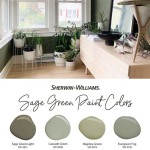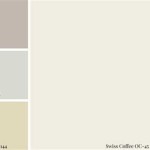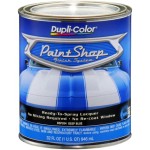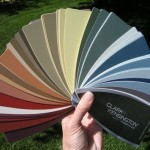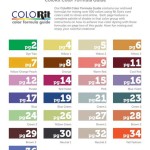What Is The Best Colour To Paint A Wooden Fence?
Selecting the best colour to paint a wooden fence is a multifaceted decision that extends beyond mere aesthetic preference. The optimal colour hinges on a range of factors including the surrounding environment, the purpose of the fence, local climate conditions, the architectural style of the property, and the desired longevity of the paint job. Therefore, a comprehensive understanding of these elements is crucial before committing to a particular hue.
The primary function of a fence should be considered foremost. Is the fence intended primarily for privacy, security, containment of pets or children, or simply for decorative purposes? Each intended use can influence the best colour choice. For instance, a fence designed to provide a strong visual barrier for privacy might benefit from a darker colour that seems more substantial and less visually permeable. Conversely, a fence intended primarily for aesthetic enhancement might be better served by a lighter, more welcoming shade.
Climate conditions also play a significant role. Darker colours absorb more sunlight and thus more heat. In regions with hot summers, a dark-painted fence can become extremely hot to the touch, potentially posing a hazard to children or pets. Furthermore, excessive heat can accelerate the degradation of the paint and the wood itself, leading to cracking, peeling, and warping. In colder climates, this thermal stress can exacerbate freeze-thaw cycles, causing further damage.
The architectural style of the house and garden should also influence the fence colour. A modern home with clean lines might be complemented by a contemporary grey or a minimalist white fence. A more traditional home, on the other hand, might benefit from a classic brown or a muted green that blends seamlessly with the natural landscape. The aim is to create a cohesive and harmonious visual aesthetic that enhances the overall appeal of the property.
Finally, the desired lifespan of the paint job is a significant consideration. Some colours are more resistant to fading and weathering than others. Lighter colours, for instance, tend to show dirt and mildew more readily than darker colours, requiring more frequent cleaning and maintenance. The type of paint used, including the quality of the pigment and the presence of UV inhibitors, also significantly affects the colour's longevity.
Understanding Environmental Factors
The immediate surroundings of the fence are a critical determinant in selecting the most appropriate colour. A fence located in a heavily wooded area will interact differently with light and shadow than a fence situated in a wide-open, sunny space. Consequently, the perceived colour of the fence will vary depending on the environment. A dark brown fence in a shady, wooded area might appear almost black, while the same fence in direct sunlight will appear considerably lighter.
The colour of the surrounding vegetation also needs to be taken into account. A fence painted a bright, contrasting colour might clash with the natural greenery of a garden, creating a jarring and visually unappealing effect. In such cases, a more muted or earthy tone might be preferable, allowing the fence to blend more seamlessly with the landscape. Consider the dominant colours of the plants, flowers, and trees in the area and choose a fence colour that complements, rather than competes with, the natural palette.
The colour of neighbouring properties and structures should also be considered. A fence that clashes dramatically with the surrounding buildings can be visually disruptive and detract from the overall aesthetic of the neighbourhood. While personal preference is important, it is also crucial to maintain a degree of visual harmony with the surrounding environment. Checking local homeowners association (HOA) guidelines is also a good idea.
Proximity to roads and other sources of pollution is also a factor. Fences located near busy roads are more likely to accumulate dirt and grime, which can alter the perceived colour of the paint over time. Darker colours tend to conceal dirt and stains more effectively than lighter colours, which can be a practical advantage in these situations.
Considering Aesthetic Impact and Property Value
The colour of a fence can significantly impact the overall aesthetic appeal of a property, and subsequently, its perceived value. A well-chosen fence colour can enhance the curb appeal of a home, making it more attractive to potential buyers. A poorly chosen colour, on the other hand, can detract from the property's value and create a negative first impression.
Neutral colours, such as white, grey, and beige, are generally considered safe and versatile options. These colours tend to complement a wide range of architectural styles and landscaping designs, making them a popular choice for fences. White fences, in particular, have a classic and timeless appeal, evoking a sense of cleanliness and sophistication. However, white fences require more frequent cleaning to maintain their pristine appearance.
Darker colours, such as brown, black, and charcoal grey, can create a more dramatic and sophisticated look. These colours can also provide a greater sense of privacy and security, as they tend to create a stronger visual barrier. However, dark colours can make a small yard appear even smaller, and they can also absorb more heat, which can be a disadvantage in hot climates.
Bold and vibrant colours, such as red, blue, and yellow, can add a touch of personality and character to a property. However, these colours should be used with caution, as they can be overwhelming and clash with the surrounding environment. If considering a bold colour, it is essential to test a small area first to ensure that it complements the overall aesthetic of the property.
The effect of colour on perceived space should also be considered. Light colours tend to make spaces appear larger and more open, while dark colours tend to make spaces appear smaller and more enclosed. This principle can be used to manipulate the perceived size and shape of a yard. A small yard can benefit from a light-coloured fence, while a large yard can accommodate a darker-coloured fence without feeling cramped.
Examining Practical Considerations: Paint Properties and Longevity
Beyond aesthetics, practical considerations relating to the paint itself are paramount. The type of paint used, its formulation, and its inherent properties play a crucial role in the longevity and performance of the fence colour. Selecting a high-quality paint specifically designed for exterior use is essential for ensuring a durable and long-lasting finish.
Acrylic latex paints are a popular choice for wooden fences due to their durability, resistance to fading, and ease of application. These paints are water-based, making them environmentally friendly and easy to clean up. They also contain acrylic resins that provide excellent adhesion to wood surfaces and protect against moisture damage.
Oil-based paints are another option, although they are becoming less common due to environmental concerns and the availability of high-quality acrylic latex alternatives. Oil-based paints offer excellent durability and resistance to chipping and peeling, but they require more rigorous surface preparation and can be more difficult to apply. They also emit volatile organic compounds (VOCs), which can be harmful to human health and the environment.
The choice of paint finish also affects the colour's appearance and longevity. Matte finishes offer a non-reflective surface that conceals imperfections and provides a subtle, understated look. Semi-gloss finishes offer a slightly reflective surface that is easier to clean and more resistant to dirt and mildew. Gloss finishes offer a highly reflective surface that is durable and easy to clean, but they can also highlight imperfections in the wood.
UV resistance is a critical factor to consider, particularly in sunny climates. Paints with UV inhibitors help to protect the colour from fading and degradation caused by prolonged exposure to sunlight. These inhibitors absorb harmful UV rays, preventing them from damaging the paint's pigments. Choosing a paint with a high level of UV resistance is crucial for ensuring that the fence colour remains vibrant and true over time.
The application process also affects the longevity of the paint job. Proper surface preparation, including cleaning, sanding, and priming the wood, is essential for ensuring optimal adhesion and preventing premature peeling and cracking. Applying multiple coats of paint, according to the manufacturer's instructions, is also crucial for achieving a durable and long-lasting finish.
In conclusion, the selection of the best colour to paint a wooden fence involves a careful evaluation of environmental factors, aesthetic considerations, and practical paint properties. No single colour is universally superior; rather, the optimal choice depends on the specific context and the desired outcome. A well-informed decision, based on a thorough understanding of these factors, can result in a fence that is both visually appealing and functionally durable.

Top 10 Wonderful Timber Fence Colors For 2025 Pentagon

7 Best Paint Choices For A Wood Fence

Tips For Choosing Paint Color Your Fence Pentagon

Top 10 Wonderful Timber Fence Colors For 2025 Pentagon

Best Fence Colours For Small Garden The Paint Guide

Best Fence Colours For Small Garden The Paint Guide

14 Best Backyard Fence Color Ideas For Stain Or Paint

Which Fence Paint Is Best Top 5 Paints

Top 10 Wonderful Timber Fence Colors For 2025 Pentagon

Do S And Don Ts For Choosing The Right Fence Colour Maria Killam
Related Posts

